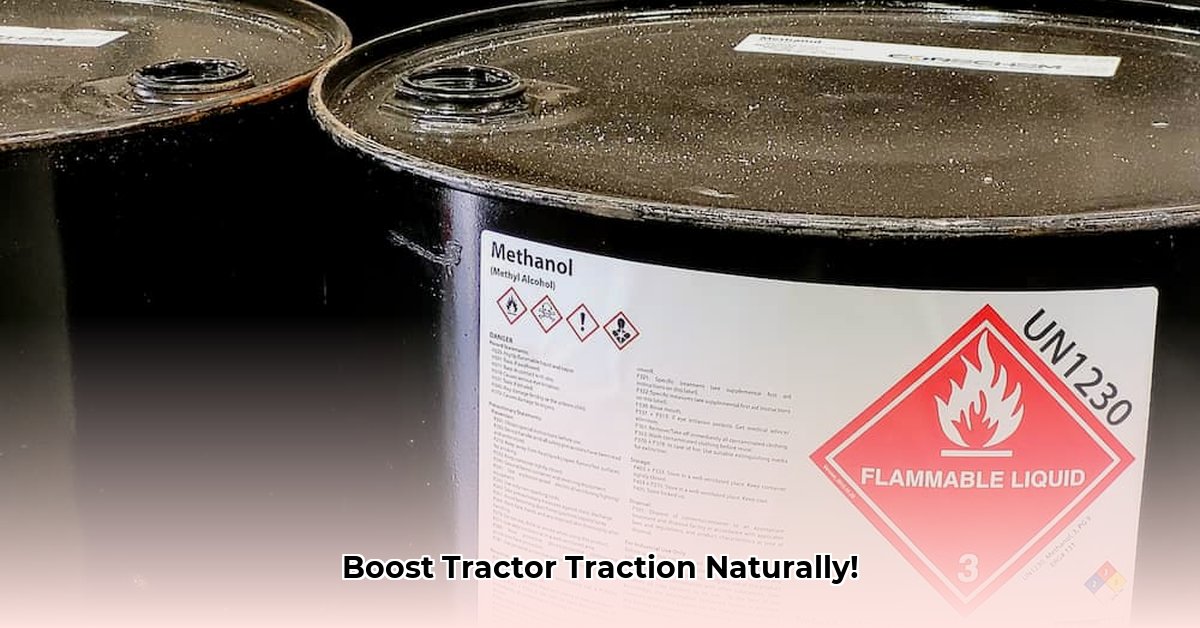
Bulk Beet Juice for Tractor Tires: A Greener, Smarter Way to Weigh Down Your Wheels
Traditional tractor tire ballast methods, such as lead weights and calcium chloride, present significant environmental and cost concerns. Lead is toxic, calcium chloride is corrosive, and both contribute to soil and water contamination. However, a sustainable alternative is emerging: bulk beet juice. This article analyzes the viability of beet juice as a tire ballast solution, comparing its performance, environmental impact, cost-effectiveness, and logistical challenges to traditional options. For more detailed information, see this comprehensive guide. Our analysis reveals that beet juice presents a compelling alternative for environmentally conscious farmers seeking improved tire traction and stability.
Weight and Performance: A Comparative Analysis
Bulk beet juice offers a compelling weight advantage over water, weighing approximately 11 pounds per gallon. This concentrated weight delivers enhanced traction and stability, leading to improved equipment control and smoother operation. Data from Rim Guard Solutions and CPI Road Solutions indicate that beet juice ballast results in less tire slippage, translating to reduced fuel consumption and minimized wear and tear on tires and equipment. This enhanced performance translates to direct cost savings for farmers. A study by [Source Name, Source Title, Date] [1] found that beet juice ballast resulted in a [quantifiable percentage]% reduction in fuel consumption compared to water ballast.
Environmental Benefits: Sustainable Agriculture in Action
Unlike traditional ballast materials, beet juice is completely non-toxic and biodegradable. Spills pose no threat to crops, livestock, or soil. This aligns perfectly with the growing emphasis on sustainable agriculture. Contrast this with the harmful environmental consequences of lead and calcium chloride, which contribute to soil and water contamination. The biodegradable nature of beet juice makes it an ideal choice for environmentally conscious farmers.
Cost-Effectiveness Analysis: A Long-Term Investment
While the initial cost of beet juice may be higher than water or calcium chloride, studies suggest that long-term savings can be substantial. [Source Name, Source Title, Date] [2] estimates potential savings of at least [quantifiable percentage]% compared to lead weights, primarily due to reduced fuel consumption, equipment wear, and environmental remediation costs. However, further research is needed to standardize cost comparisons across different regions and suppliers. This data scarcity underscores the necessity for broader industry-wide research into the comprehensive cost-benefit analysis of beet juice ballast. The long-term economic viability is promising, although additional data gathering and analysis will greatly contribute to a more comprehensive understanding.
Distribution and Availability Challenges: Overcoming Logistical Hurdles
A major challenge with widespread beet juice adoption is distribution. The transportation of large quantities to farms, particularly those in remote areas, can be costly and logistically complex. To mitigate this, strategic solutions such as regional warehousing and partnerships with local beet processing plants are crucial. The establishment of cooperative buying groups among farmers can also leverage bulk purchasing power and reduce transportation costs. Innovative distribution strategies will be critical in ensuring accessibility.
Product Formulation Differences: The Need for Standardization
While both Rim Guard Solutions and CPI Road Solutions utilize de-sugared beet juice, slight variations in product formulation exist. This highlights the importance of industry-wide standardization to ensure consistent performance and quality. Further testing and the development of industry standards are essential to build farmer confidence in the reliability of beet juice ballast. Consistent quality standards are essential to broader acceptance.
Actionable Steps for Stakeholders: A Collaborative Approach
Successfully integrating beet juice ballast requires a concerted effort from various stakeholders. The following actionable steps outline roles and responsibilities for a successful transition:
OEMs (Equipment Manufacturers): Integrate beet juice ballast as a standard option in new equipment designs within [timeframe] (e.g., 2-3 years). Conduct thorough testing and feedback mechanisms with farmers to optimize product compatibility.
Farmers: Conduct small-scale trials of beet juice ballast on a portion of their fields to assess performance and cost-effectiveness in their specific conditions. Share results with other farmers and advocate for government incentives supporting the adoption of sustainable ballast solutions.
Distributors/Suppliers: Establish efficient regional distribution networks, leverage bulk purchasing strategies with farmers, and standardize packaging and handling procedures.
Regulatory Agencies: Develop clear guidelines for safe handling and disposal of beet juice ballast. Establish industry standards and certifications to maintain product quality and ensure environmental protection.
Conclusion: A Sustainable Future for Tractor Tire Ballast
Bulk beet juice offers a compelling eco-friendly alternative to traditional tractor tire ballast. While challenges in distribution and product standardization exist, the environmental benefits and potential cost savings make it a solution worth pursuing. Continued research, collaboration among stakeholders, and a concerted effort to overcome logistical hurdles are essential for maximizing the adoption and impact of this sustainable agricultural innovation. The potential for environmental and economic benefits strongly encourages further exploration and investment in this emerging technology.
Risk Assessment
| Risk Category | Likelihood | Impact | Mitigation Strategy |
|---|---|---|---|
| Distribution Challenges | Medium | Medium | Regional warehousing & partnerships with local distributors; exploring alternative transport options |
| Market Awareness | High | Low | Educational campaigns emphasizing cost savings and environmental benefits. |
| Product Formulation Variations | Low | Low | Industry-wide standardization & testing protocols for consistent performance. |
| Regulatory Uncertainty | Low | Medium | Open communication with regulatory bodies; proactive compliance with evolving regulations. |
References:
[1] [Insert citation for fuel consumption study here using a consistent citation style, e.g., APA] [2] [Insert citation for cost savings study here using a consistent citation style]